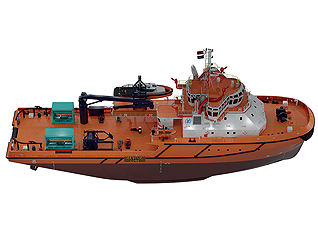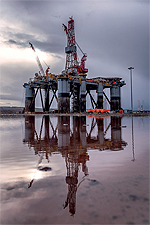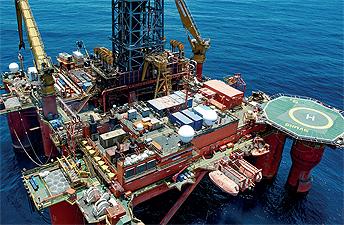
First for UK
Vattenfall Network Solutions, a division of Vattenfall, the leading European energy company, has launched Power as a Service to the UK market, building on decades of experience in Sweden. With this new offer, Vattenfall takes full responsibility for major energy users’ electrical needs by owning their networks and managing all compliance, regulatory and environmental issues, so business owners can concentrate on their core business activities.
The new service, which is the first of its kind in the UK, provides major energy users with power services in exchange for a fixed monthly fee. Power as a Service can help major energy users by freeing up significant working capital from their high voltage energy infrastructure for reinvestment in their core business.
Unlike Energy as a Service (EaaS), which is an established model that typically refers to energy efficiency–related business models or subscriptions, Power as a Service applies exclusively to major energy users who own, or are looking to invest in new, high voltage electrical infrastructure.
Vattenfall’s new offer is designed to support UK manufacturing, industry, transport and commercial property companies and provides a unique combination of finance, electrical design and installation, as well as operation and maintenance of businesses high voltage electrical infrastructure.
Response vessel
 A new multi-purpose oil spill response and towage vessel being built for the Kuwait Oil Co will be installed with a Cathelco marine growth prevention system (MGPS) to prevent bio-fouling and corrosion in seawater pipework. The system is manufactured by Cathelco which has been part of the Evac Group since 2018.
A new multi-purpose oil spill response and towage vessel being built for the Kuwait Oil Co will be installed with a Cathelco marine growth prevention system (MGPS) to prevent bio-fouling and corrosion in seawater pipework. The system is manufactured by Cathelco which has been part of the Evac Group since 2018.
The 60-meter vessel will be equipped for towing services, area surveillance, offshore fire-fighting, logistics support duties and search and rescue in an area around Kuwait and in international waters.
To protect the pipework against marine growth and corrosion, copper and ferrous anodes will be installed in five seachests, connected to a control panel. In operation, the copper anodes produce ions which prevent the larvae of barnacles and mussels from settling and creating blockages in engine cooling and firefighting systems.
At the same time, the ferrous anodes produce ions which create a protective coating on the internal surfaces of pipes to mitigate corrosion. More commonly, in the case of ships with steel pipework, the anti-corrosive function is achieved using aluminum anodes.
The concentrations of copper ions are around two parts per billion, effective in preventing marine growth from settling, but having no effect on the wider marine environment after discharge.
Moving forward
 Malin Marine, a Scottish marine engineering company, has secured a Master Services Agreement (MSA) with Well-Safe Solutions Limited for the provision of Engineering, Naval Architecture, Shipping and Fabrication Services.
Malin Marine, a Scottish marine engineering company, has secured a Master Services Agreement (MSA) with Well-Safe Solutions Limited for the provision of Engineering, Naval Architecture, Shipping and Fabrication Services.
Well-Safe Solutions has recently set out its commitment to invest £200m in bespoke assets in the next three years, with an innovative approach to meet the challenges and regulatory imperatives around decommissioning. Malin Marine Services, a new business unit of the Malin group, combine the heritage and expertise that Malin is known for, with creativity and a drive to develop best practice within the industry. This new agreement will enable both companies to work together to have a real impact in this exciting area of marine engineering.
Said Ben Sharples, Director, Malin Marine: “We have been working with Well-Safe for many months now, on a range of services focused on their Well-Safe Guardian semi-submersible decommissioning rig. The significant effort and activity through all levels within Malin, especially during this challenging period, has been excellent, as has the relationship we have built with Well-Safe and their partners in a relatively short window. We are delighted to be associated with such a progressive Tier 1 contractor.”
Strategic partnership
bp and Microsoft Corp. have agreed to collaborate as strategic partners to further digital transformation in energy systems and advance the net zero carbon goals of both companies. This includes a co-innovation effort focused on digital solutions, the continued use of Microsoft Azure as a cloud-based solution for bp infrastructure and bp supplying renewable energy to help Microsoft meet its 2025 renewable energy goals.
“bp is determined to get to net zero and to help the world do the same. No one can do it alone – partnerships with leading companies like Microsoft, with aligned ambitions, are going to be key to achieving this,” said William Lin, bp executive vice president for regions, cities and solutions. “By bringing our complementary skills and experience together, we are not only helping each other achieve our decarbonization ambitions but also creating opportunities to support others on their journey towards reducing carbon emissions.”
“bp shares our vision for a net zero carbon future, and we are committed to working together to drive reductions in carbon emissions and fulfil demand with new renewable energy sources,” said Judson Althoff, executive vice president of Microsoft’s Worldwide Commercial Business. “A strategic partnership such as this enables each organization to bring its unique expertise for industry-leading change and the potential to positively impact billions of lives around the world.”
$83 million contract
 Global contractor Dolphin Drilling has signed an $83 million contract with Petroleos Mexicanos (PEMEX). The deal will see the North Sea drilling pioneer’s Blackford Dolphin rig utilized in Mexico for the duration of the work, which is expected to last around 15 months. The Blackford Dolphin is currently mobilizing for Mexico ahead of the commencement of operations in October.A pioneer of North Sea drilling, Dolphin Drilling is celebrating its 55th year in operation this year and is one of the leading contractors in the industry. The Blackford Dolphin was completely rebuilt in 2008 with a 6th gen topside and can operate in water depths from 70 to 1,700 meters moored. Bjørnar Iversen, Chief Executive Officer of Dolphin Drilling, said: “Our ability to mobilize the asset quickly and our excellent operational and safety performance were key to us winning the contract. Blackford Dolphin is one of the most efficient moored semisubmersibles on the market, providing a reduction of the CO2 emissions associated with drilling due to its low fuel consumption and high drilling performance.“Our alliance with PEMEX demonstrates how we can add value to operators located anywhere in the world. I am looking forward to us continuing our global growth in the years to come, and see Mexico as a strategically important market for our moored semisubmersibles.”
Global contractor Dolphin Drilling has signed an $83 million contract with Petroleos Mexicanos (PEMEX). The deal will see the North Sea drilling pioneer’s Blackford Dolphin rig utilized in Mexico for the duration of the work, which is expected to last around 15 months. The Blackford Dolphin is currently mobilizing for Mexico ahead of the commencement of operations in October.A pioneer of North Sea drilling, Dolphin Drilling is celebrating its 55th year in operation this year and is one of the leading contractors in the industry. The Blackford Dolphin was completely rebuilt in 2008 with a 6th gen topside and can operate in water depths from 70 to 1,700 meters moored. Bjørnar Iversen, Chief Executive Officer of Dolphin Drilling, said: “Our ability to mobilize the asset quickly and our excellent operational and safety performance were key to us winning the contract. Blackford Dolphin is one of the most efficient moored semisubmersibles on the market, providing a reduction of the CO2 emissions associated with drilling due to its low fuel consumption and high drilling performance.“Our alliance with PEMEX demonstrates how we can add value to operators located anywhere in the world. I am looking forward to us continuing our global growth in the years to come, and see Mexico as a strategically important market for our moored semisubmersibles.”
Time is money
According to Hyperion Executive Search, a global talent acquisition company that works exclusively with clean energy and e-mobility companies, the wrong executive-level hire can cost cleantech companies approximately $1.5 million.“It’s strategically important for cleantech start-ups to quickly find the right candidate so that they have the agility to respond to today’s rapidly changing business landscape when every dollar counts,” said David Hunt, CEO of Hyperion. “By investing in the hiring process from the job description to the job offer, cleantech companies actually save money in the long run. In the cleantech sector, where the experienced talent pool is very small, such mistakes and costs are compounded,” added Hunt.
New joint venture
Clean Power Hydrogen (CPH2) has joined forces with B9 Energy in a new Joint Venture to manufacture and distribute the unique Membrane-Free Electrolyser™. The Joint Venture (JV) plans to manufacture and distribute the patented electrolysers to the UK and worldwide from a base in Northern Ireland. The CPH2 Membrane-Free Electrolyser™ is a unique way to produce hydrogen. The most common form of green hydrogen production is by water electrolysis using either a PEM (Proton Exchange Membrane) electrolyser, which has a polymer membrane to keep the hydrogen and oxygen gases in their separate streams, or a membrane-supported Alkaline Electrolyser. Membranes are costly and prone to failure. The CPH2 technology does not use a membrane in the reactor ‘stack’ therefore improving reliability and reducing both CAPEX and OPEX cost.